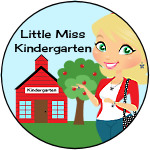I have had a lot of questions about Counting Jars and how to use them in class. I didn't really realize that there would be so much talk about one of my favorite activities from Investigations. When I first started using Investigations in the year 2000, the counting jar was one of the first things I fell head over heals with. As a child I loved to count and I counted everything in my head to keep myself busy no matter where I went or what I did. I never told anyone nor did I see a reason to. The information I gathered through counting was really only for me or my amusement. So naturally, as a teacher of young children, I was drawn to The Counting Jar.
First, I have several counting jars because one was just not enough because they are in use a lot. This year I have six. One counting jar would do but when you understand the value and longevity of this activity, I bet you really want more. The objects and quantities change and even the expectations throughout the year. When this happens, the counting jar comes back into focus and the interest is revived and new expectations are taught. Start off with what you have on hand and invest your time in teaching the expectations for the counting jar. Like I said, one counting jar was not enough for my class but one could work depending on how you use it.
What kind of jars?
This is the fun part of setting up counting jars! You decide how many, what kind and what size to use. You can use what you have on hand to get it started. Jars can be big or small and even tiny. Gather materials from the class to put inside the jars so that you always have replenishment materials if needed.
What the counting jar is and what it is not!
The counting jar is not an estimation jar and has nothing to do with estimation. The counting jar is used for...counting. It provides repeated opportunities to count sets of objects, create sets of objects and record quantities of objects. One reason I love this activity is because of the child recorded component of the counting jar activity. The recordings become the cornerstone during our class meetings as we discuss what we discovered in the counting jars, what we observed other children doing and what we will try next time. We work on learning the expectations as a group before the counting jar finally becomes a choice.
How do you start using the counting jar?
In the beginning I model using the counting jar.
I model the task and I model good counting strategies.
As I model the task I am modeling and talking about efficient counting strategies. I begin the discussion of counting strategies with organizing the count. Once the children have experience with organizing the count and counting, I let the children guide the discussion and add to different counting strategies. These sessions take several days and each time I model the task and discuss effective counting strategies. Soon the children will be modeling the task and we will be discussing the strategies we observed the model child using. And finally, the children will be working with the jars independently.
How do the children record?
We record our findings in our math notebook because that is something readily available in our classroom and requires no extra copies. The children use the jars independently and gather the materials on their own after plenty of modeling and guided practice. Children can record their findings in pictures, numbers and words. How a child records his/her representation of the jar also becomes a focus lesson in itself. In the picture above the children had practiced the parts of the routine they knew and we had been discussing the recording of what was in the jar. The mini poster above captured the count the children recorded and provided a number line for those children who didn't know how to write the number.
These are the first attempts of recording the contents of the counting jar. Children record using pictures, numbers and words. I honestly think these are some of the best first attempts I have ever had. I really believe these recordings reflect that the task was modeled enough and the expectations were made clear. And it reflects that I didn't release the kids too soon which is something that I always have to work on and keep in mind!
How often do you use counting jars?
During our math block counting jars are a choice among other choices. Children need multiple opportunities to count sets, create sets and record quantities. I like to offer the choice of multiple jars to choose from because the jars are always available. What I have discovered is that children have a favorite jar and really like to recount their favorite. If an item is missing out of a jar they can't wait to tell you! If you notice that children are not choosing counting jars, just change what is inside!
How and when do children become independent?
Children become independent after I have modeled the expectations several times and after I have supported and guided them as they practiced. When they become independent with the task they will have an anchor chart to remind them of the expectations.I created this visual after we had several teacher directed sessions with our counting jar and after we had created a class chart. I did this for a few reasons. I modified it slightly from Investigations and our class created chart is well written on, redefined and used. This serves as an anchor chart that remains posted. It helps to remind the children the steps and expectations when they begin working independently, It is posted near the counting jars. It demonstrates the steps and expectations as they are now. It can change and grow throughout the year because our thinking and understanding changes and grows throughout the year. Ultimately it will change as our focus changes.
Over the years I have noticed that children tend to want to skip step 2 when they are working independently. Making an equivalent set is an integral part of the counting jar, so it is on the chart and it always reminds me that math is so much more than the final step or a correct answer even when you are five.
The freebie download now includes the jar labels so grab them if you need them!







































8 comments:
I saw an earlier post about your counting jars and thought what a great way to teach numeration and make the kinders work further in their investigations. This post really helps me to see how you use it and the benefits of it. Thanks so much for taking time to do this and for the freebies!! I'm starting this this week for sure!! Linda's Learning Loot
Thank you! I hope the freebies help!
I love this idea for a great center.Thanks for sharing.I love your blog and look forward to reading and using your lessons on presenting the best for our scholars.
Enjoy!
Hey Laral,
So cute. Thanks for the freebie. Do the kids confuse the jar number with the quantity?
I have been recreating and modifying some of the Investigations recording sheets as we go. Added a numeral bank as a header dor Grab and Count. Recirding the numeral isn't a requirement for the activity, but the practice won't hurt since it is on the 2nd six weeks report card. After reading this post, I may just change the bank to a number line. Thanks for the idea!
Margaret
No the kids don't confuse the number for the quantity. I told them how much I loved counting jars and that is why we have so many and have to number them!
Where did you get your jars that you use? They look like the perfect size!
The jars are from Dollar Tree. I have also gotten some off of Amazon but they were a lot more expensive.
Post a Comment